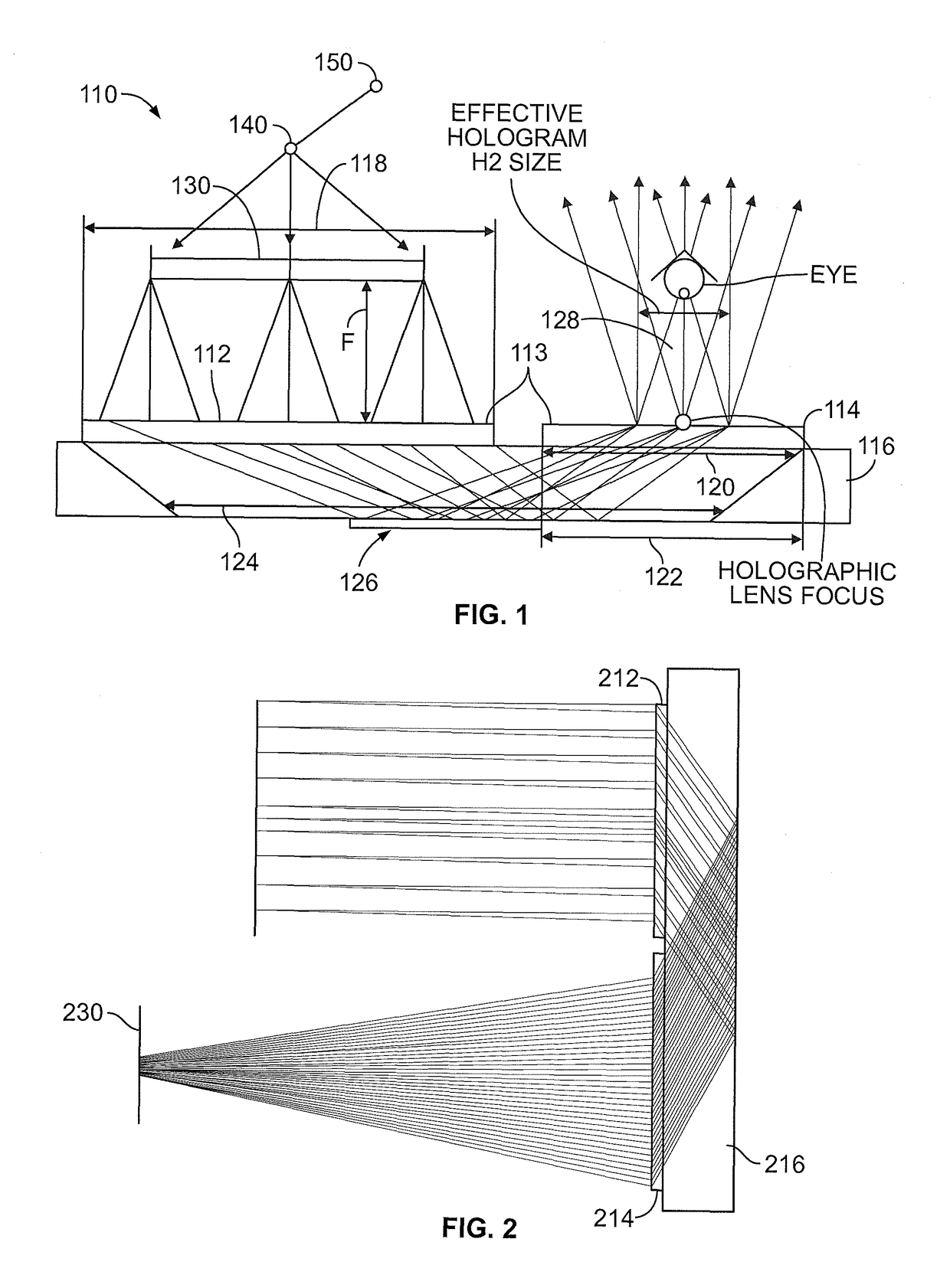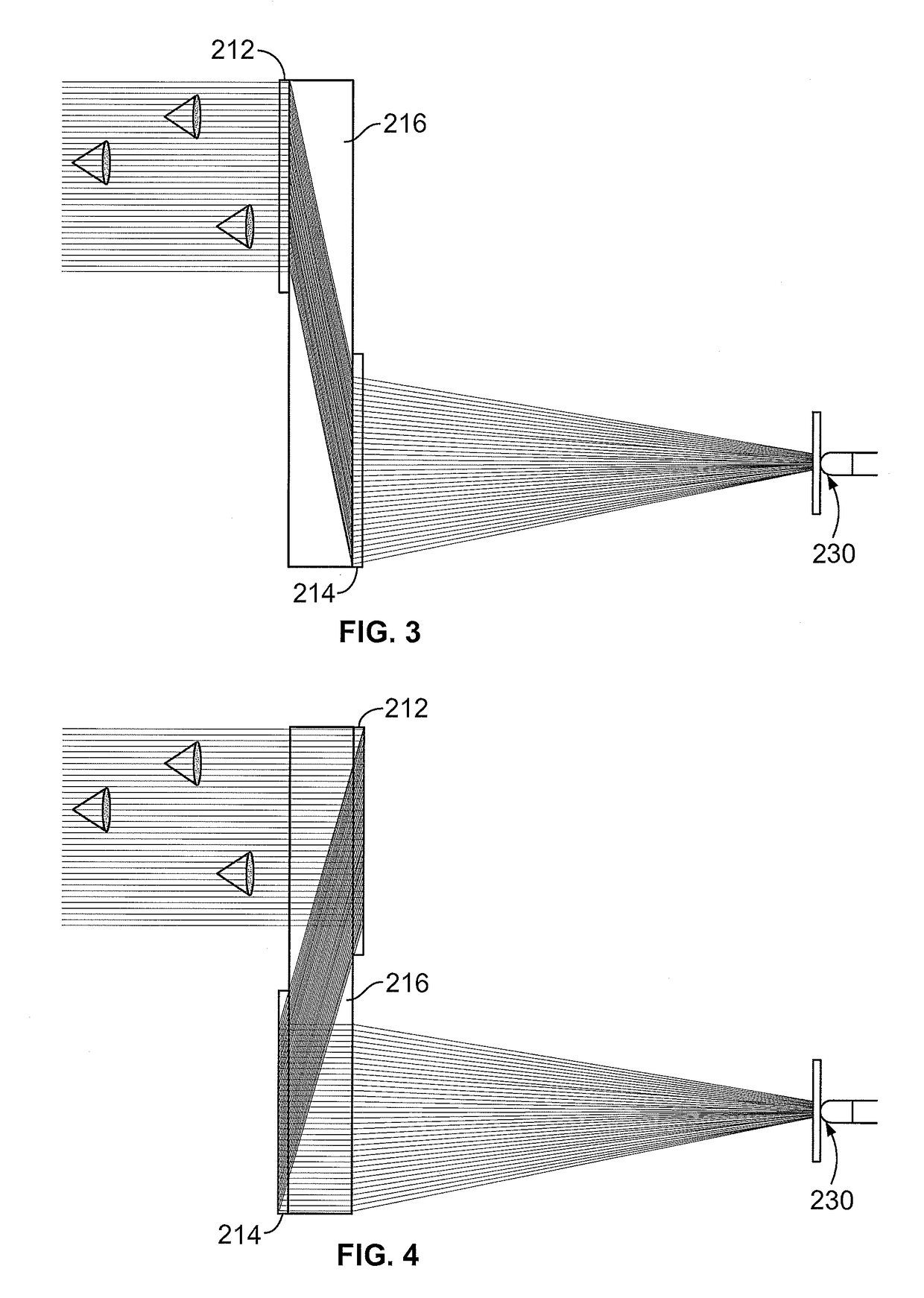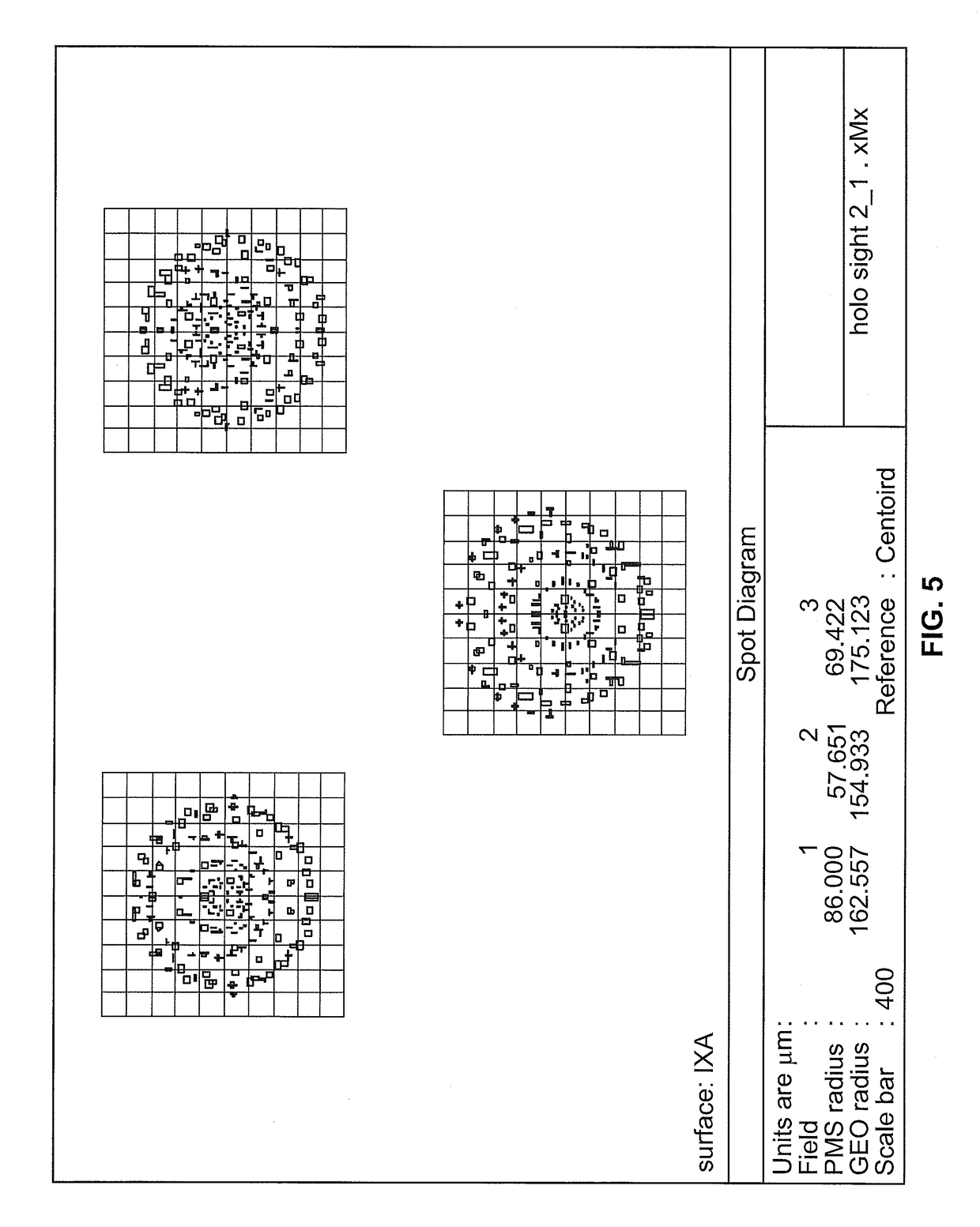Method for design and manufacturing of optics for holographic sight
a technology of optics and manufacturing methods, applied in the field of optics for holographic sight design and manufacturing, can solve the problems of low light throughput, irregular see-through sight optics, and questionable implementation of laser diodes in sights, and achieve the effect of optimizing image quality
- Summary
- Abstract
- Description
- Claims
- Application Information
AI Technical Summary
Benefits of technology
Problems solved by technology
Method used
Image
Examples
Embodiment Construction
[0021]In the following, unless otherwise stated, the term recorded or recording refers to the fabrication of a holographic element.
[0022]Although the present invention is susceptible of embodiment in various forms, there is shown in the drawings and will hereinafter be described presently preferred embodiments with the understanding that the present disclosure is to be considered as an exemplification of the invention and is not intended to limit the invention to specific embodiments illustrated.
[0023]It is to be further understood that the title of this section of the specification, namely, “Detailed Description of the Preferred Embodiments” relates to a rule of the United States Patent and Trademark Office, and is not intended to, does not imply, nor should be inferred to, limit the subject matter disclosed herein or the scope of the invention.
[0024]The method of the subject invention comprises a design for the optics of a see-through holographic weapon sight, with the optical par...
PUM
 Login to View More
Login to View More Abstract
Description
Claims
Application Information
 Login to View More
Login to View More - R&D
- Intellectual Property
- Life Sciences
- Materials
- Tech Scout
- Unparalleled Data Quality
- Higher Quality Content
- 60% Fewer Hallucinations
Browse by: Latest US Patents, China's latest patents, Technical Efficacy Thesaurus, Application Domain, Technology Topic, Popular Technical Reports.
© 2025 PatSnap. All rights reserved.Legal|Privacy policy|Modern Slavery Act Transparency Statement|Sitemap|About US| Contact US: help@patsnap.com



